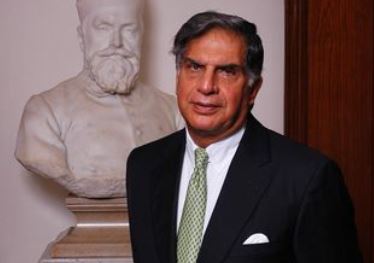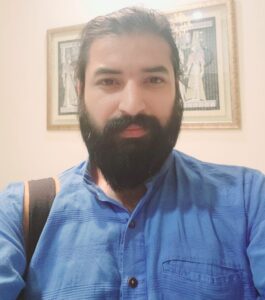
Ratan Tata
You are probably wondering why you have never seen the name Ratan Tata on any ‘rich people list’! He isn’t on any lists because he gave much of his wealth to initiatives of the Tata Trust.
Giving back to society has been a tradition of the Tata family. Tata Group believes in the Parsi legend, Humata, Hukhta, and Hvarshata, which translates to, Good thoughts, Good words and Good deeds.
“When you are successful, you must give back to society. Society gives us so much; we must reciprocate,” JRD Tata, from whom Ratan Tata took over the mantle of the Tata Group, once said.
Like JRD, Ratan Tata too was known for his gentleness and humility. He was counted among the leading businessmen in the world, yet he carried no sense of pride. He remained unmarried, and the entire Tata family was like his own. Beyond this, he believed that every Indian was like family to him.
Being a follower of the Zoroastrian faith, referred to as Zoroastrian, Parsee, or Parsi, he believed in the Iranian prophet Zoroaster. But even more than that, he was a nationalist in spirit and a humanist in vision. His philanthropy was guided by a desire to improve the well-being of society through giving.
The origin of the word philanthropy is the Greek word ‘Fil-anthra-pi’, meaning ‘Love of fellowmen.’ It is not only or necessarily in giving of money as we understand it today.
“Philanthropy and the ‘idea of calling’ were a significant part of the Tata family. They stood by strong ethics and principles, never compromising them, no matter how high the stakes.
Philanthropy is possible only when there is a deep passion and quest within a person, and when they are deeply committed to a thought or action. Only then can they be willing to dedicate time and provide financial support!
During his lifetime, Ratan Tata identified many cases where he believed cooperation and assistance were needed.”
Born on December 28, 1937, to Naval Tata and Soonoo Commissariat, Ratan had a rough childhood as his parents separated when he was seven, and along with his younger brother Jimmy, was raised by his grandmother Navajbai Tata.
Also read:
- Ratan Tata: He steered the Tata Group through choppy seas
- Ratan Tata: The titan we never crowned
- Ratan Tata: The People’s Bharat Ratna
He completed his degree in architecture in 1962 from Cornell University, New York, much against the will of his father who wanted him to become a mechanical engineer. He then completed an advanced management programme at Harvard Business School in 1975. On the advice of JRD Tata, he turned down a job offer from IBM to join the family business.
Ratan Tata learned a unique approach and set of values from the university. The processes of drafting, conceptual planning, redrafting, redesigning, reconceiving, and reworking repeatedly taught him that to reach successful, creative solutions, ideas must be developed, abandoned, reworked, tweaked, and refined.
Nothing is achieved alone; it takes a team—an open-minded team. He learned that all business plans, much like in architecture, must be open to constructive criticism, feedback, and reworking until a product is ready. He also learned that for a product or service to be successful, it must be efficient, practical, and aesthetically pleasing.
To earn extra money as a student, Ratan took up jobs like washing planes at the airport. He loved aeroplanes, and this arrangement suited him well. He learnt to fly at 14 but couldn’t fly solo because he was underage. He even performed tricks in the sky. At the age of 17, he flew solo for the first time.
“JRD Tata, Chairman and founder of the Bombay Plan (Planning for Post-Independent India), saw in Ratan a young, committed, and enthusiastic agent of change with an unwavering value system and strong principles. Ratan was a risk-taker with a global outlook.
In 1981, at the age of 44, Ratan was appointed chairman of Tata Industries, suddenly thrusting him into the spotlight. He identified key areas where the company could grow and outlined ways to adapt the organization to the changing environment. Ratan’s plan emphasized venturing into high-tech businesses, focusing on select markets and products, pursuing mergers and acquisitions, and leveraging group synergies to drive growth.”
He never flaunted his success, pride, or wealth. He believed in employee welfare and remained committed to philanthropy, convinced that success should be reflected across the people of India. Most importantly, he demonstrated that it was possible to run a large business that is clean, honest, and ethical.
Ratan aimed to eliminate hierarchy within the organization to encourage a fast and healthy exchange of ideas. He sought a fresh approach to work and professionalism.”
Ratan Tata wanted Tata companies to prove they could compete with companies from developed countries while remaining strong in emerging markets. He upheld the dignity and faced the challenges brought by global competition. He maintained the company’s sovereignty during a time when globalization pressured Indian companies to follow global norms, with support from the government.
He built the institution to be large, larger, and then the largest, embodying the spirit of the philosophy ‘Work is Worship.'” He built institutions as an industrialist and became an icon who will always live in the hearts of millions. He was like an icon who seemed to have something that created an instinctive, heartfelt connection with emotions.
*Randhir Kumar Gautam teaches at Gandhian School of Democracy and Socialism, ITM University, Gwalior.







Nice one Sir